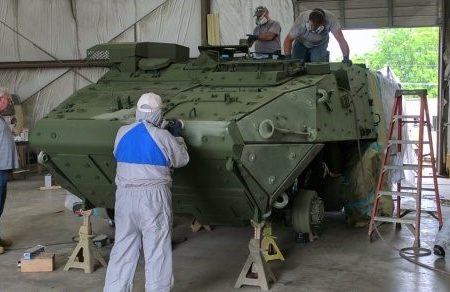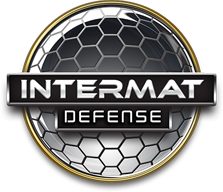
You’ve probably seen plenty of Army vehicles on the road. They might be standard olive drab, or possibly a desert camouflage pattern. However they’re painted, the basic material for the coating is called CARC, Chemical Agent Resistant Coating.
“Our Nato customers, our allies, they are all using this. This paint is in theater,” said Pam Clark from Huntsville’s CFI Military Solutions. She is not talking about CARC.
Pam is talking about “Intermat Stealth, Anti-Thermal Spraying Coating”. It’s a paint CFI was showing off in its booth at the recent Space and Missile Defense Symposium.
“We have a paint that covers their IR signature,” said Pam. IR stands for infra-red. You can think of it as the heat signature. Obviously, if a vehicle has a less detectable heat signature it would be less visible to a sensor that homes in on heat. The kind of sensors that might be on an enemy drone, or a heat-seeking missile.
“We’re defending the people who are inside the buildings or inside the Humvee. We’re defending their lives. If they can’t be seen, and they can’t be sought out by missiles, they can’t be hurt,” said Pam.
There’s a photo from CFI that shows three vehicles. One is mostly painted with Intermat, and it’s far less visible than a similar vehicle painted with CARC. A third vehicle is entirely painted with Intermat and its heat signature is significantly harder to detect than the other two vehicles. CFI is in the process of doing testing, and that’s where another benefit of their paint became obvious.
“We have data that backs it up now on the Stryker (vehicle) that we had down here. It will keep the inside cooler too,” said Pam Gardner.
She believes the testing will prove the worth of the paint for the U.S. Military, and as Pam has already said, it’s being used by NATO allies. Something that lessens the heat signature would save lives. If it keeps a vehicle cooler it would protect sensitive instruments, which could also be a lifesaver.
CFI Military Solutions believes it has a winner.

